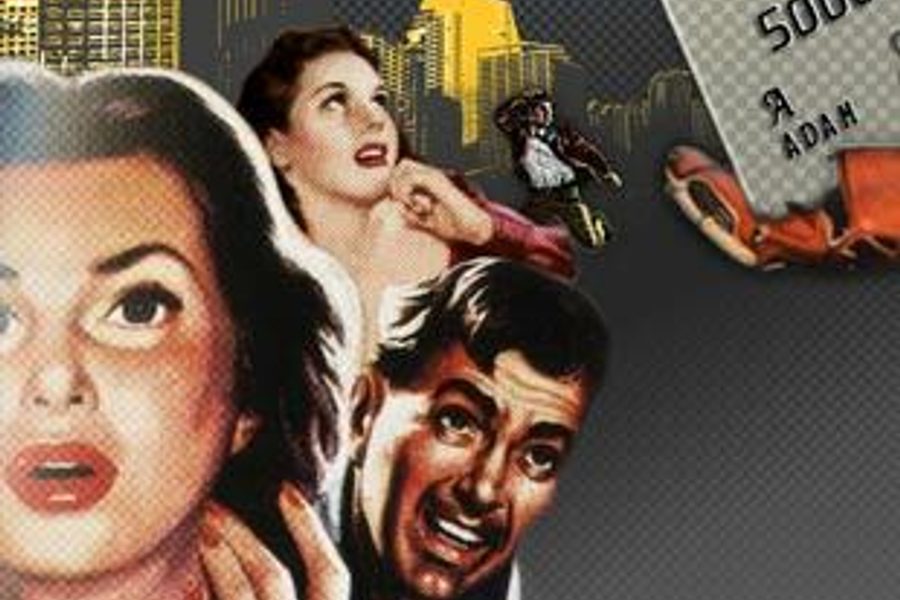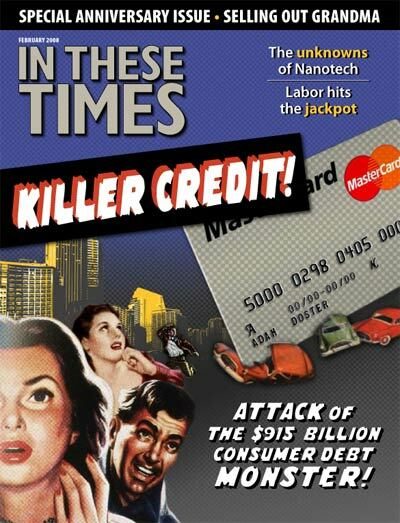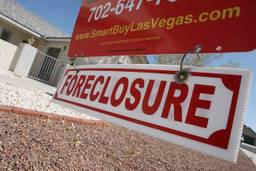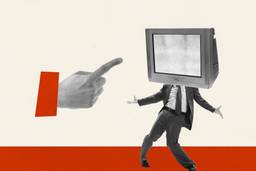
Candace Angus is not one to break the rules. When she served on the Chicago police force for 25 years, it was her duty to maintain order. And as a longtime credit card user, she was never late on a payment and never in debt. So when she found interest on her Capital One balance considerably higher than she anticipated, she was irked.
A customer service representative explained that the charge was “residual interest” from two months prior that had not yet been applied. Although she didn’t grasp the concept fully, Angus swallowed the news and paid her next bill in full. Thirty days later, residual interest was still on the statement, and higher than the month before. “[Capital One] caught me entirely by surprise,” she says. “I’d never heard of that practice before.”
What was this mysterious charge? Essentially, the payoff balance was obsolete by the time it reached Angus’ mailbox because interest continued to build as her bill slid its way through the mail system. If her check took a week to reach the processing center, seven days worth of interest was eventually tacked on. And this caveat was hidden in the contract’s fine print.
“It should be clear to the consumer that interest is being held up for a few months,” Angus fumes. “Is it to the benefit of the consumer or is it to the benefit of the credit card company?” While she acknowledges that others have it worse than her – because her problem didn’t lead to default or loads of debt – Angus’ experience typifies those of many. “All the cards don’t use that practice,” she says, “but they all catch you somehow.”
In the last quarter century, an unstable financial relationship was forged between Americans – grasping for an increasingly elusive middle-class lifestyle – and credit card companies that offer strapped consumers a lifeboat. But without adequate regulation, the industry has used deceptive techniques to hoodwink consumers and accumulate more than $30 billion in profits per year. Now, if legislators at the national level don’t step in, some analysts fear American’s affection for credit may widen the existing credit crisis.
Bearing the debt burden
First, the facts. Americans own almost 700 million credit cards and hold $915 billion in consumer debt, with the average borrower owing more than $9,000, according to Cardtrak.com, a top financial information website. For a rough comparison, the world’s 54 poorest countries owe a nudge under $400 billion in total foreign debt. In 1970, 49 percent of Americans didn’t have a credit card. Today, only 7 percent don’t.
Coinciding with this rapid growth, the Supreme Court ruled in 1978 that banks could charge the maximum interest rate determined by state legislatures in the banks’ home states, not the interest rate of the states in which they do business. Unsurprisingly, credit card businesses moved to Delaware and South Dakota – two states with virtually no interest caps – thus rendering state usury laws worthless.
Twelve years ago, the court applied the same logic to the size of fees a bank can charge. Congress has refused to step in at the federal level, enabling the industry’s thorough deregulation.
With the freedom to act on their own accord, banks have implemented an array of confusing and punitive measures that bilk cash from clients.
“It’s pretty extraordinary to see how the industry has essentially created a diluted regulatory environment, where they can basically do what they want to consumers,” says Robert Manning, author of Credit Card Nation and a professor of finance at the Rochester Institute of Technology.
Before the ’90s, most credit cards had one annual fee and a fixed rate. Today, they carry an assortment of charges that oscillate with the market and the cardholder’s credit risk. If a borrower overdraws, instead of just declining the transaction from the outset, companies tack on a fee of $30 or more, on top of a 29.99 percent penalty rate on interest. If a payment is missed, an average late fee of $34 is levied. That’s a $21 hike since 1995, according to a 2006 Government Accountability Office report.
Late fees are endless, as well. Banks charge the borrower until he or she breaks, as opposed to canceling a delinquent card, which was once an established procedure. Vanity is the banks’ justification, claiming the practice allows customers to evade the humiliation of rejection.
Universal default is another vicious innovation. If applied, one lender can raise the terms of a loan to the default rate (27 percent, on average) when a customer fails to pay another lender, even if the customer’s record is perfect with the original bank. In theory, a technical error or fraud could trigger rate hikes on every card someone owns, a scary thought considering the average American has seven credit cards in his or her wallet. Roughly half of the banks that issue credit cards have universal default language in their contracts.
For people with substandard credit scores or limited credit histories, often low-income people of color, intensely marketed subprime or “fee-harvester” cards present a huge danger. These carry substantially higher interest rates and lower credit limits than cards granted to prime borrowers, and are laden with fees. In fact, it’s possible for subprime fees to absorb a borrower’s entire limit, leaving him or her with nothing to spend.
“The issue is how you make credit card loans to people with bad credit, and how you make money off of that,” says Jim Campen, executive director of Americans for Fairness in Lending (AFFIL). “And the solution is basically, give them a credit card but don’t give them credit, and charge them a lot of fees for doing it.”
Even highly responsible customers are at risk. In some circumstances, borrowers are subject to retroactive price hikes, meaning banks can enforce higher rates on old balances as well as new ones, even if none of the original payments were late. Two-cycle billing, a practice some banks use, calculates interest payments based on the average daily balance over two billing cycles as opposed to one, harming borrowers with divergent monthly balances, even if they pay promptly.
And the list goes on.
While it’s unlikely that sensible consumers would ever agree to these outrageous terms, many opt in unknowingly. In 2004, the Wall Street Journal found that a standard contract in the ’80s was one-page long. But weak disclosure requirements now allow banks to dole out 30-page contracts in six-point font, often burying important stipulations, such as nonbinding legal arbitration, or omitting basic terms of credit.
Consumer advocates like Campen argue that credit card companies are counting on people to misunderstand the total cost of swiping a card. “[The contracts] are hard to understand if you do read them,” he says. “You don’t know at the time … that you’re signing your rights away.”
Angus agrees. “Once you start getting a little risky, a little in debt … they treat you completely differently,” she says. “It’s like they want to push you into dangerous waters.”
And it has worked. Exploiting this asymmetry of information, credit card companies have reaped enormous earnings. R.K. Hammer, a California firm that evaluates credit card portfolios, found that the industry raked in $36.8 billion in net pretax profits during 2006. Meanwhile, credit card debt has more than tripled since 1990.
Plastic safeguard
If credit cards are a trap, why don’t people abandon them entirely? Because, experts say, people must have their basic needs met, which credit cards make possible.
“The perception … is that credit cards are used for frivolous spending, that it’s just easy money for people to use to buy their nice sneakers,” says José Garcia, a senior researcher at the think tank Demos and author of a new study called “Borrowing to Make Ends Meet.” “But they’re not seen as a way that people have been dealing with economic shock.”
Despite strong growth in labor productivity, hourly wages for most workers are not keeping up with inflation. In the last 20 years, incomes for the bottom 60 percent of households rose only 5 percent to 15 percent, according to the Bureau of Labor Statistics. Meanwhile, the average cost of living shot up 88 percent in that time.
Healthcare costs are a major contributor to this trend. A 2005 Commonwealth Fund study found that 77 million Americans age 19 and older “have difficulty paying medical bills, have accrued medical debt or both.” A Harvard review of 1,771 bankruptcy filings found that illness or medical bills were the cause of half of such filings, and that 75 percent of those who defaulted were initially insured.
But the problem extends further. As legislators disinvest from education, the average cost of college increased 165 percent between 1970 and 2005. In 2006 alone, it rose 6 percent, outpacing wages, inflation or financial aid.
What’s more, the housing bubble pushed prices through the roof, leading to the doubling of median mortgage debt from 1989 to 2004.
Childcare, transportation and food cause concerns, as well. And as personal savings are drained – Garcia estimates they are at the lowest levels since 1934 – folks must choose between their plastic safety nets or financial ruin.
These facts were largely ignored when Congress passed the infamous bankruptcy bill of 2005. Restructuring the bankruptcy code was a major priority for credit card companies, as they claimed hundreds of thousands of debtors were frivolously filing for bankruptcy – thus discharging the debts they owed to the banks – when they had the means to cover the unpaid sum. In reality, this was a crisis entirely invented by the banks. The nonpartisan American Bankruptcy Institute estimates that only 3 percent of filers are able to discharge debts they can actually afford.
Mere facts didn’t stop the creditors. In 1997, lobbyists wrote the core of a bill that pushed more people from Chapter 7 bankruptcy into the less forgiving Chapter 13 bankruptcy, which forces households to accept three-year to five-year repayment plans on secured and unsecured debts. Although it stalled in the Senate numerous times, credit card companies and commercial banks pushed hard, donating $25 million and $75 million, respectively, to federal candidates and the political parties between 1999 and 2005. (See graph on page 28.) All that effort paid off in 2005 with so-called reforms that made it increasingly difficult for working households to crawl out from under their arrears.
Continuing crisis?
Although the current debt levels are foreboding enough on their own, last summer’s credit crunch elicits new, more unsettling fears. Like mortgages, credit card debt is often carved up and sold on global debt markets as securities. Since borrowers generally pay back what they owe, that debt has been profitable and safe for traders, which explains the $40 billion increase in securitized credit card debt from September 2005 to 2006.
However, credit cards are showing new signs of stress. When debt was cheap and housing prices were sky-high, many Americans used their homes as piggy banks, borrowing against them to finance both their debts and once-unattainable goods. Now, with the home-equity faucet forcibly shut off, over-leveraged borrowers are forced to find alternative ways to keep up with their bills, often ratcheting up credit card use to compensate.
New data from the Federal Reserve sheds light on this trend. In November 2007, credit card debt surged at an annual rate of 11.3 percent, a six-month high. For a comparison, credit card debt jumped 6.1 percent in 2006, and only 3.1 percent in 2005. Delinquency rates are also on the rise, albeit more slowly. For vulnerable working people, this new debt can be tough to cover.
These developments are problematic because credit card debt is unsecured, meaning no portion of defaults can be salvaged. Yet broader dangers lurk on a macro scale. If those bundled securities of debt decline in value, as mortgage-backed securities did last summer, banks and institutional investors (pensions, mutual funds, hedge funds) could all take a major hit, which could cause comparable damage to the broader economy.
England offers a disturbing precedent. The real estate market there buckled about 18 months ahead of the U.S. collapse. As banks tightened their lending criteria at the end of 2005, credit card delinquencies jumped as much as 50 percent. The British online publication Finance Markets reported that between March and November 2007, at least 10 percent of Britons were denied at least one credit card. The result? The total number of personal bankruptcies is expected to jump to at least 120,000 this year, estimates Grant Thornton, an accounting firm. That’s triple the number in 2004. In a recent poll by the U.K.-based price comparison website uSwitch.com, 23 percent of Brits called their current debt level “unmanageable.”
Like their counterparts overseas, U.S. credit card companies have been dealing with the lack of liquidity in self-interested ways. “Certain banks … don’t have any financial room,” says Manning, “which means they are going to have to squeeze their credit card divisions for even more cash flow to help underwrite the loss of mortgage fees and underwriting fees.”
Consequently, analysts have witnessed interest rates rising, credit limits falling and low teaser rates disappearing – decisions that may add durable stability but will squeeze strapped borrowers in the short term.
“This is affecting people across the board.” says Garcia. “As people feel the subprime crisis, credit card companies are putting additional strain [by raising their] credit card interest rates, which also will increase the amount of economic instability in households.”
Regulatory roadblocks
With the threat of a recession looming, grassroots pressure is building to protect borrowers from the credit card industry’s worst abuses. The most encouraging effort is the formation of Americans for Fairness in Lending AFFIL. Founded in August 2006, AFFIL is an umbrella organization that develops public messaging campaigns for its 18 consumer rights allies, which are free to focus on the nuts and bolts of lobbying and mobilizing. “Our role is to publicize and get out the message,” says Campen, “and hopefully that will lead people to get engaged.”
Some labor unions have stepped up, as well. The Service Employees International Union (SEIU), as part of an initiative targeting banking practices that damage the financial security of working people, is taking aim at Bank of America. According to the union, the bank is creeping up against the federal regulation that prohibits any single bank from controlling more than 10 percent of the country’s deposits.
To counter, SEIU released reform measures for holding Bank of America accountable to consumers. The union also collected reports of racial discrimination in lending, tax evasion and merger-related job cuts as leverage.
Even Congress, which to this point has largely overlooked the consumer debt crisis, is beginning to take action.
Headed by Sen. Carl Levin, (D-Mich.), the Permanent Subcommittee on Investigations had bank officials testify in April and December 2007 to investigate excessive fees and the arbitrary increases in consumers’ interest rates.
In January 2007, the Senate Banking Committee, chaired by Christopher Dodd (D-Conn.), challenged credit card executives to defend rising late fees and predatory marketing.
Two bills have been proposed: a Levin-sponsored Senate bill that would make it harder for creditors to charge hidden fees and bump rates without notice, and a House bill authored by Rep. Mark Udall (D-Colo.) that would amend the Consumer Credit Protection Act to enhance consumer disclosures and protect underage consumers.
Yet neither bill has gotten off the ground, and the prospects aren’t encouraging. Part of the reason is timing: addressing the mortgage mess has preoccupied lawmakers who monitor the financial services industry. The overrepresentation of moneyed interests on the Hill is important, too. The American Bankers Association recently commissioned Jonathan Orszag, co-founder of economics consulting firm Competition Policy Associates and a former economic adviser to President Clinton, to issue a report arguing that federal oversight would be counterproductive.
In the 2006 election cycle, credit companies – JPMorgan Chase, Bank of America, Citibank, Capital One and HSBC – made $7 million in congressional campaign contributions. And it doesn’t help that two leading Senate Democrats, Dodd and Hillary Clinton (D-N.Y.), represent large consumer-banking constituencies.
These roadblocks won’t keep angry borrowers and their advocates from fighting.
But until adequate regulations are put in place to safeguard consumers from their cards, and the need for borrowing is minimized by boosting earnings for working people, Americans will keep answering those mail solicitations.
“Why should anybody be allowed to put out unfair products,” asks AFFIL’s Campen, “which are simply designed to trap the unaware. In theory, we regulate toys, water, food, drugs, and we don’t want to have toxic products in any of those areas. We shouldn’t have toxic credit products either.”






